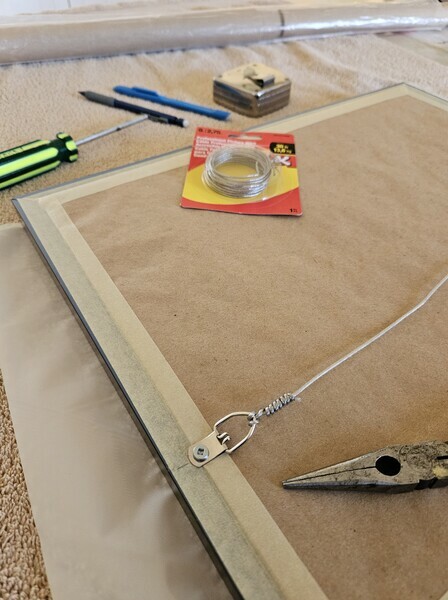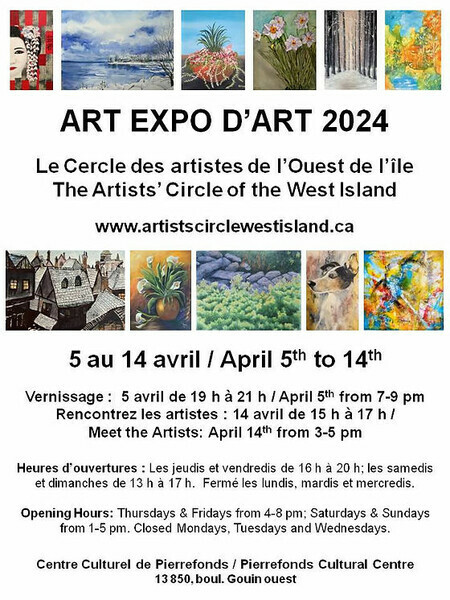In the news
Whatever you celebrate at this time of year, whether it's a Happy Easter, a blessed Ramadan, preparations for Passover, or another event, festival, or holiday, I'd like to wish you a Happy Spring.
I took advantage of the long weekend, with a holiday break from my volunteer activities in chronic pain patient advocacy and pain research projects, to frame a number of my paintings.
With three art shows coming up, I've been doing quite a lot of painting recently. Not only several new works, I also finished up a few older watercolours that I'd set set aside while I decided how I wanted to finish them.
With almost ten watercolours to frame in a multi-step process, I took over our kitchen island and dining table feom Friday morning through to tonight's Easter dinner.
What are the steps I take, to frame each watercolour? That's a great question!
I'll explain it here, as it's quite different from framing an oil or acrylic painting on a stretched canvas or linen frame.
First I mount each fully-dried and flattened watercolour onto an acid-free and lignin-free mat, using archival-quality framers' tape.
The most challenging step is next, which is choosing the right frame for the matted painting. I keep a selection of solid wood frames at home; most are locally-made, and sold through an independent art supply shop that also houses a gallery. These frames are sold empty, with no glass, so I order museum-quality acrylic panels for each one. There's no risk of injury from broken glass during transportation to and from exhibitions, and the frames are a bit less heavy without the glass. Some art shows have begun refusing to accept glass panels, so this seems to be a new trend.
To select a frame for one of my watercolours, I consider the subject matter, the style of the painting, and the colours. I'll also think about what I was feeling when I planned and painted the piece, which emotions or feeling I wanted to express about the scene.
Based on all of that, I'll pull out a few empty frames and try my painting in each of them. There's often one frame that seems perfect, for a specific painting. I usually double-check by getting my husband's opinion; we're both lifelong museum-goers, and he has a good eye for frames for different styles of artworks.
Once the matted watercolour is safely ensconced in its frame - after I've cleaned both sides of the acrylic panel - it's time to add an acid-free and lignin-free backing board. Depending on the depth of the frame, I'll sometimes add a thicker protective board, to bring the surface flush with the back of the frame.
Next I cover the frame's back with brown paper, to prevent dust or damage. I also find that the brown paper, with folded-under edges, gives a nice "finished" look to my framed paintings.
Finally, I measure each frame to install D-rings in the appropriate locations and run coated framing wire between them. Each end of the wire is carefully twist-wrapped, to prevent slippage and to protect gallery walls.
I believe that paintings should be finished with as much care as is taken in planning and painting them, so my framing process takes a while. They could be framed more quickly, but then I wouldn't be as proud of the results when it comes time to hang the pieces for an exhibition.

The only time I frame my watercolours is when they're destined for an art show, or being donated to a charity event, so it's important to me to that they look their best - even on the back.
Although I take real pride in doing all of this myself, for each of my watercolours, my sweetheart screwed in the D-rings on 6 of these paintings over the long weekend. My right hand and arm are affected by a rare disease called CRPS, and this autoimmune and neuroinflammatory condition was acting up more than usual yesterday.
I started this art adventure a few years ago specifically because of the symptoms of this rare condition, including chronic pain and a Mild Cognitive Impairment, so my artwork is completely intertwined with my chronic pain.
That's also why I launched my Art Despite Pain #ArtDespitePain initiative, raising awareness of chronic pain - and encouraging others living with pain to try creative activities for pain management; brain-plasticity, or neuroplasticity, research has shown that art creation can improve quality of life for people living with persistent pain - and even reduce sensations of pain!
I mentioned earlier that I had three upcoming art shows, all free and open to the public, and the first of these opens this week.

The spring Art Expo of the Artists Circle of the West Island opens with a Vernissage the evening of Friday April 5, 2024, at the Pierrefonds Cultural Centre in Montréal.
Two of my plein-air watercolours will be on display, along with paintings by many other local artists using a variety of styles and mediums:
~ Vernissage (show opening): Friday April 5, from 1900 to 2100
~ Meet the Artists (show closing): Sunday April 14, from 1500 to 1700
The Spring Art Expo runs from Saturday April 6 through Sunday April 14, 2024:
. Thursdays & Fridays: 1600 to 2000
. Saturdays & Sundays: 1300 to 1700
. Closed Mondays, Tuesdays, & Wednesdays.
The Pierrefonds Cultural Centre [Centre Culturel de Pierrefonds] is located behind the Pierrefonds Library, at: 13850 Gouin West, in Montréal.
Free parking usually available at the Library.
For those of you who're out-of-town, I'll post photos of my paintings here - after the opening night Vernissage.
Happy spring!